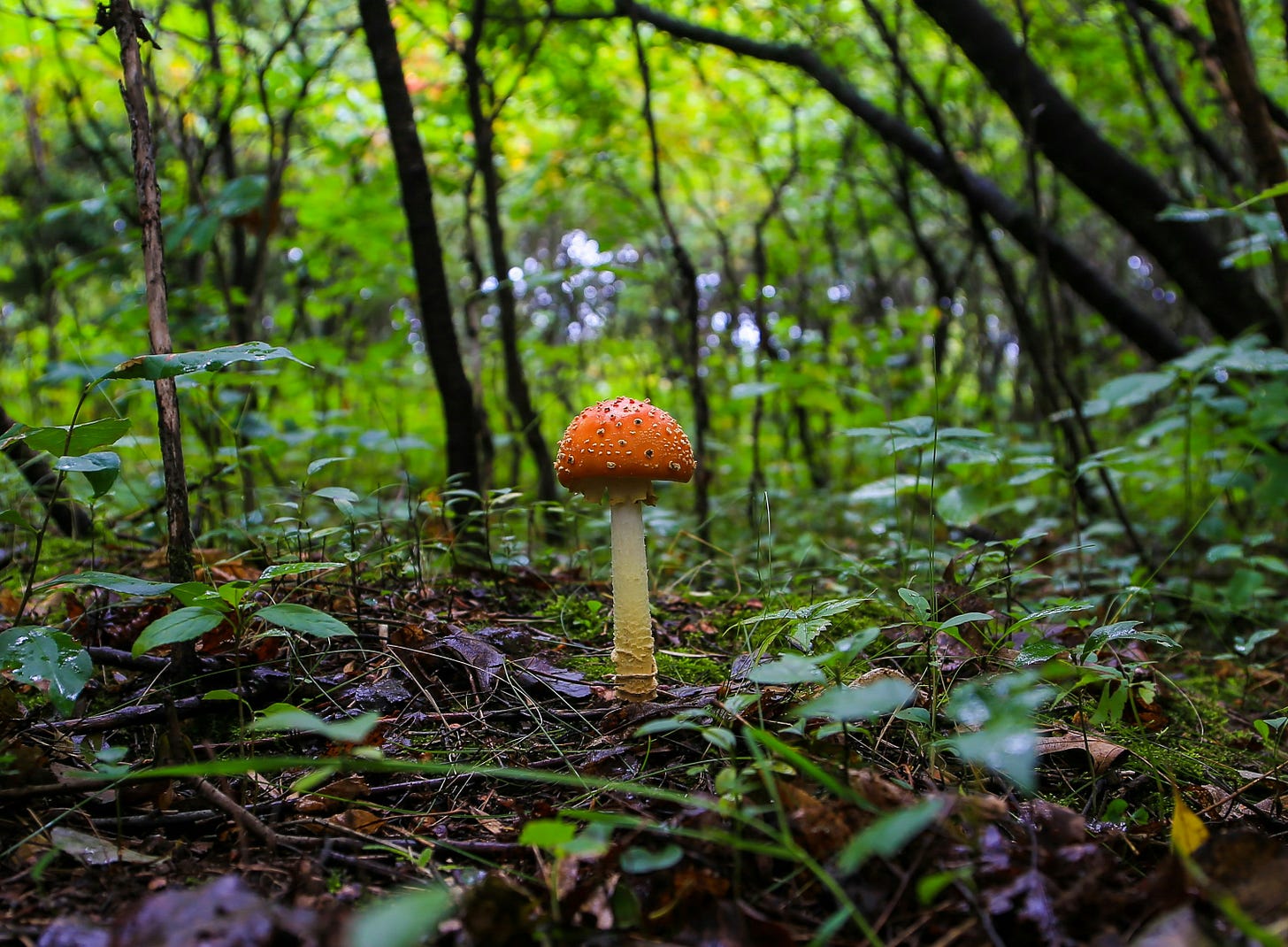Mushrooms Were the First Life to Emerge After the Hiroshima Bombing: Why The Future Will Belong To Optimism
Notes On Imagining The Future #24 by Fabrice Guerrier
I recently returned to the work of Anna Tsing - someone whose ideas I had encountered years ago, but whose voice now resonates more deeply with the visionary lens I’ve been cultivating. Her book The Mushroom at the End of the World explores a profound question: how do we, as humans, exist within states of collapse and ruin? How do we survive and find meaning in the cracks of a broken society, within the debris of a fallen world?
It’s strange, because collapse is not evenly distributed. Many well-adjusted people from wealthier classes might sense a distant unease, but the extremely wealthy are often shielded from the visceral reality of societal unraveling. For much of the world, marginalized people, the economically displaced, those living on the outer edges of capitalism and ecological catastrophe, collapse is not an idea. It is a lived experience. I think often of them, of my people in Haiti, of family members still living in Port-au-Prince and I don’t have to go far. Even here in Los Angeles, a city of over 13 million, we are brushing up against the sharp, fractured edges of climate crisis and urban alienation, even as we live in the illusion of cosmopolitan beauty.
There is a new paradigm overtaking our lives and our planet. And the question that echoes in me again and again is this: how do we exist in these states of unraveling? How do we imagine futures that center the soul, the natural world and prioritize well-being, not as luxury, but as necessity?
In a podcast interview with Anna Tsing, something struck me. The interviewer described how takashi mushrooms were the first living things to grow after the atomic devastation of Hiroshima. In a matter of seconds, millions of lives, homes, structures, and histories were disintegrated. That moment was, in every way, an “end of the world.” And yet, the mushroom emerged, life growing quietly from the ashes of total annihilation.
This detail moved me. It reminded me of the helplessness many of us feel today, aware that a third world war, or some other apocalyptic rupture, may not be far off. These threats feel so much larger than us. But the emergence of the mushroom, to me, speaks to the radical power of imagination, an agency that arises when we dare to look inward and reimagine outwardly. The mushroom becomes a symbol of restoration, of a rebirth rising through the decay, through the compost of what was.
Human systems, for all their pride, cultural, political, historical, have repeatedly shown a pattern of self-destruction. As long as we remain severed from our own nature, by which I mean not just the trees and rivers, but the emotional, psychic, and relational terrain within us, we remain vulnerable to the same endings.
The mushroom’s appearance is surreal. It tells us something essential: even after the world ends, life persists. And if life persists, then so too does meaning. Our societal systems, our relationships, our inner beliefs, many of these are designed in ways that disarm us, robbing us of power, of clarity, and of hope. And we grieve. We grieve deeply. We grieve not only what was taken, but what was never allowed to emerge. The visions that were suppressed. The meanings never actualized. The selves that lived on the margins, unseen.
Yet from the compost of grief, something holy stirs. A mycelial web of meaning, imagination, and connection calls us to remake ourselves towards a greater freedom at all cost. It asks us to reinhabit the terrain of our own souls. The tragedy of modernity is that we believed ourselves to be isolated, logical beings, contained in skin and doomed to perish and, end in heaven or hell. But we are ecologies. Within us live the past and future, the bones and dreams, the aspirations and ideas, the loved ones, our ancestral lineage and even our heartbreaks. Our psychological landscape is rich and this inner life is a vast geographic territory that carries all this transformative ecology. Our imagination and our becoming optimism, is truly a living biome.
I believe the psychology of futures begins here, with the realization that we are ecological beings. And like all ecosystems, we experience decay especially if so much of our understandings of our being-ness comes from a world in collapse. But decay is not failure. Decay is part of the cycle. What matters is how we engage the decaying parts, those shaped by the death rattle of modernity and allow something new to rise.
That new life is already growing. Inside us are ‘mushrooms’, symbols of survival and living optimism, of transformation, of life’s refusal to quit. The future is not a distant promise. It is the act of tending to these mushrooms. It is building systems, communities, and reconstituting our many selves to honor the soul and re-align us with life, not as dominators, but as collaborators with the earth, with each other, with mystery.
And so, I return to the image: a mushroom growing after Hiroshima. It tells me that worldbuilding is not only about imagination it is an act of spiritual composting to access greater degrees of optimism in us and shape new systems for our planet, our communities and democratic governments. A way to reclaim life. A ritual of grief and creativity intertwined. A declaration that even at the end, something begins. That in the very soil of endings, we are invited to become perhaps for the first time something more than human, since I deeply believe the truest future will only belong to our optimism.
Thank you for reading and making it at the bottom of the newsletter. Shout out to my Patreon and Substack supporters!: Jan Fumosa, Laura Gibbs, Trevor Lynn and Paulette Moore




